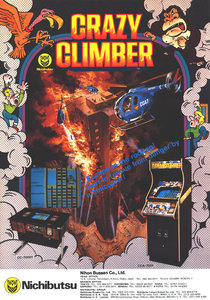
Crazy Climber is a vertically scrolling video game produced by Nichibutsu and released for arcades in 1980. In North America, the game was also released by Taito America. Ports for the Arcadia 2001 and Atari 2600 were published in 1982, followed by the Famicom in 1986 and X68000 in 1993.

Zaxxon is a scrolling shooter developed and released by Sega as an arcade video game in 1982. The player pilots a ship through heavily defended space fortresses. Japanese electronics company Ikegami Tsushinki was also involved in the game's development.

Radar Scope is a 1980 shoot 'em up arcade game developed by Nintendo R&D2 and published by Nintendo. The player assumes the role of the Sonic Spaceport starship and must wipe out formations of an enemy race known as the Gamma Raiders before they destroy the player's space station. Gameplay is similar to Space Invaders and Galaxian, but viewed from a three-dimensional third-person perspective.

Ice Climber is a platform game developed and published by Nintendo. It was released in 1985 for both the arcade VS. System and the Famicom / Nintendo Entertainment System console. The characters Popo and Nana, collectively known as the Ice Climbers, scale 32 vertically scrolling, ice-covered mountains to recover stolen vegetables from a giant condor. In some European countries, Ice Climber was bundled with the Nintendo Entertainment System.

Balloon Fight is an action video game developed by Nintendo and HAL Laboratory and published by Nintendo. The original arcade version was released for the Nintendo VS. System internationally as Vs. Balloon Fight, while its Nintendo Entertainment System counterpart was released in Japan in 1985 and internationally in 1986.

Popeye is a 1982 platform game developed and released by Nintendo as an arcade video game. It is based on the comic strip of the same name created by E. C. Segar and licensed from King Features Syndicate. Some sources claim that Ikegami Tsushinki did programming work on the game. As Popeye, the player must collect hearts thrown by Olive Oyl from the top of the screen while being chased by Bluto. Popeye can punch bottles thrown at him, but can only hurt Bluto after eating the one can of spinach present in each level. Unlike Nintendo's earlier Donkey Kong games, there is no jump button. There are three screens.
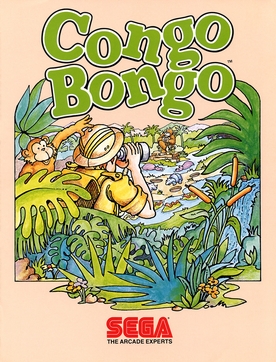
Congo Bongo, also known as Tip Top, is a platform game released as an arcade video game by Sega in 1983. A message in the ROM indicates it was coded at least in part by the company Ikegami Tsushinki. The game is viewed in an isometric perspective, like Sega's earlier Zaxxon (1982), but does not scroll. Numerous home ports followed.

Wild Gunman is a light gun shooter game developed and published by Nintendo. Originally created as an electro-mechanical arcade game in 1974 by Gunpei Yokoi, it was adapted to a video game format for the Famicom console in 1984. It was released in 1985 as a launch game for the Nintendo Entertainment System (NES) with the Zapper light gun.
Ikegami Tsushinki Co., Ltd. is a Japanese manufacturer of professional and broadcast television equipment, especially professional video cameras, both for electronic news gathering and studio use. The company was founded in 1946.

Targ is a maze shoot 'em up developed by Exidy and released as an arcade video game in 1980. It depicts vehicular combat in a future world. It was released in North America by Exidy in June 1980 and in Japan by Sega in July.

Gun.Smoke is a vertically scrolling run and gun video game and designed by Yoshiki Okamoto and released in arcades in 1985. Gun.Smoke centers on a character named Billie Bob, a bounty hunter going after the criminals of the Wild West.
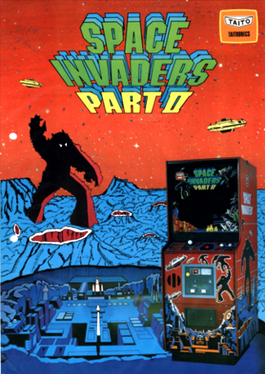
Space Invaders Part II is a 1979 fixed shooter arcade video game developed and published by Taito. In North America, it was distributed by Midway Games as Space Invaders Deluxe. It is the sequel to Space Invaders (1978). The player controls a laser base that must destroy formations of descending aliens, while avoiding their projectiles. New features have been added, such as aliens that split into two when shot, an increased high score limit with the player able to save their name as initials, and short cutscenes in-between stages. It runs on the Taito 8080 arcade system.

Space Fever is a 1979 arcade game by Nintendo R&D2. Some sources claim that Ikegami Tsushinki also did programming work on Space Fever. It was released in both monochrome and color versions. The gameplay is similar to Space Invaders, which had been released by Taito in 1978. In America, the game was distributed by Far East Video.

Exerion is a fixed shooter video game developed and published by Jaleco for arcades in September 1983, and licensed to Taito for manufacture and distribution of the game in North America. The player controls a starship and must fire at enemies on the screen while avoiding projectiles. The game uses a pseudo-3D scrolling background, giving a sense of depth, and the player's ship has a sense of inertia while it is being controlled with the joystick.
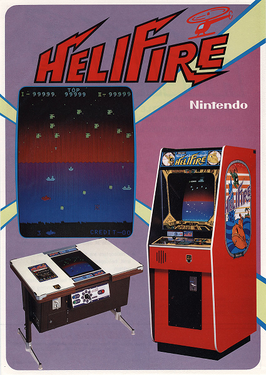
Heli Fire is a video game developed by Nintendo, and released in arcades in September 1980 by Nintendo. Some sources claim that Ikegami Tsushinki also did design work on Heli Fire. Similar to Taito's Polaris (1980), players control a submarine and must survive as long as possible against a barrage of enemy attacks from the sea and above.

Space Firebird is a 1980 arcade video game developed by Nintendo R&D1 and released by Nintendo in Japan and Europe. In America, the game was distributed by Far East Video. Sega-Gremlin also released a version of the game in North America.
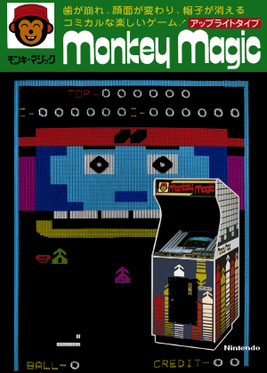
Monkey Magic (1979) is a video game released in arcades by Nintendo in exclusively in Japan in 1979. It is a Breakout clone and one of Nintendo's earliest arcade games. Some sources claim that Ikegami Tsushinki also did design work on Monkey Magic. Players control a paddle to hit the ball at a large number of blocks shaping a monkey's face. To earn a victory the user must destroy the entire face of the monkey. Players can also earn different numbers of points by catching blocks that fall, as well as hitting the ball in different places.

Head On is an arcade video game developed by Sega/Gremlin and released by Sega in 1979. It's the first maze game where the goal is to run over dots. Designed by Lane Hauck at Sega/Gremlin in the United States, it was the fourth highest-grossing arcade game of 1979 in both Japan and the US.
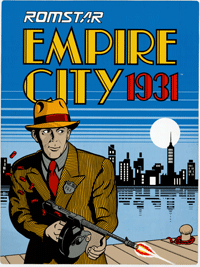
Empire City: 1931 is a shooter game developed by Seibu Kaihatsu that was originally released into arcades in 1986, by Taito in Japan and Europe and by Romstar in North America. The game has players taking on the mafia in 1931 New York City by gunning down mobsters one by one.


















